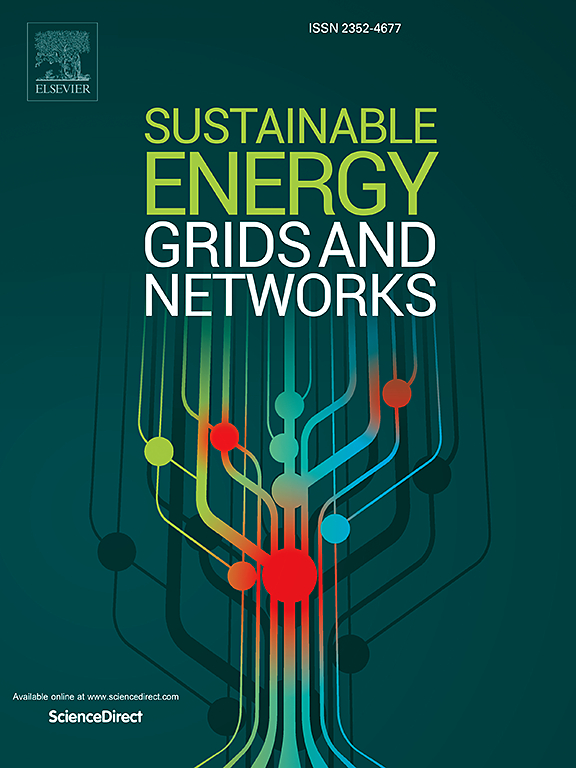Capturing electricity trade in generation expansion models with a limited geographical scope: A novel method for deriving trade curves
IF 4.8
2区 工程技术
Q2 ENERGY & FUELS
引用次数: 0
Abstract
Generation expansion planning (GEP) models are crucial for designing future electricity systems. Due to computational limitations, these models often focus on a single country, thus neglecting the benefits of cross-border electricity trade. This paper presents a novel methodology for efficiently incorporating cross-border trade potentials into GEP models to address this issue. The method consists of an elaborate pre-processing step that accurately computes trade potentials so that these can subsequently be added to an investment model with a limited geographic scope. The approach is benchmarked against various alternative approaches that endogenously optimize the foreign dispatch, and the results indicate that our approach accurately determines system costs while inducing only slight deviations in the capacity mix. Although our approach requires significant pre-processing computations and an implementation effort, it is computationally highly efficient. Once the trade curves have been constructed, they can readily be added to any nationally focused GEP model with only minor modifications and very little computational effort. Modelers could consider this approach for national energy system analyses, particularly if their problem is computationally demanding or if their tool does not easily allow for geographic expansion.
在有限地理范围的发电扩展模型中获取电力交易:一种新的推导交易曲线的方法
发电扩展规划(GEP)模型是设计未来电力系统的关键。由于计算的限制,这些模型往往只关注一个国家,从而忽略了跨境电力贸易的好处。本文提出了一种新的方法,有效地将跨境贸易潜力纳入全球经济展望模型,以解决这一问题。该方法包括一个精细的预处理步骤,精确计算贸易潜力,以便随后将这些潜力添加到具有有限地理范围的投资模型中。该方法与各种内部优化外部调度的替代方法进行了基准测试,结果表明,我们的方法准确地确定了系统成本,同时仅在容量组合中引起轻微偏差。虽然我们的方法需要大量的预处理计算和实现工作,但它在计算上是高效的。一旦建立了贸易曲线,它们就可以很容易地添加到任何以国家为重点的全球经济预测模型中,只需要进行微小的修改和很少的计算工作。建模者可以考虑将这种方法用于国家能源系统分析,特别是如果他们的问题对计算要求很高,或者如果他们的工具不容易允许地理扩展。
本文章由计算机程序翻译,如有差异,请以英文原文为准。
求助全文
约1分钟内获得全文
求助全文
来源期刊

Sustainable Energy Grids & Networks
Energy-Energy Engineering and Power Technology
CiteScore
7.90
自引率
13.00%
发文量
206
审稿时长
49 days
期刊介绍:
Sustainable Energy, Grids and Networks (SEGAN)is an international peer-reviewed publication for theoretical and applied research dealing with energy, information grids and power networks, including smart grids from super to micro grid scales. SEGAN welcomes papers describing fundamental advances in mathematical, statistical or computational methods with application to power and energy systems, as well as papers on applications, computation and modeling in the areas of electrical and energy systems with coupled information and communication technologies.
 求助内容:
求助内容: 应助结果提醒方式:
应助结果提醒方式:


